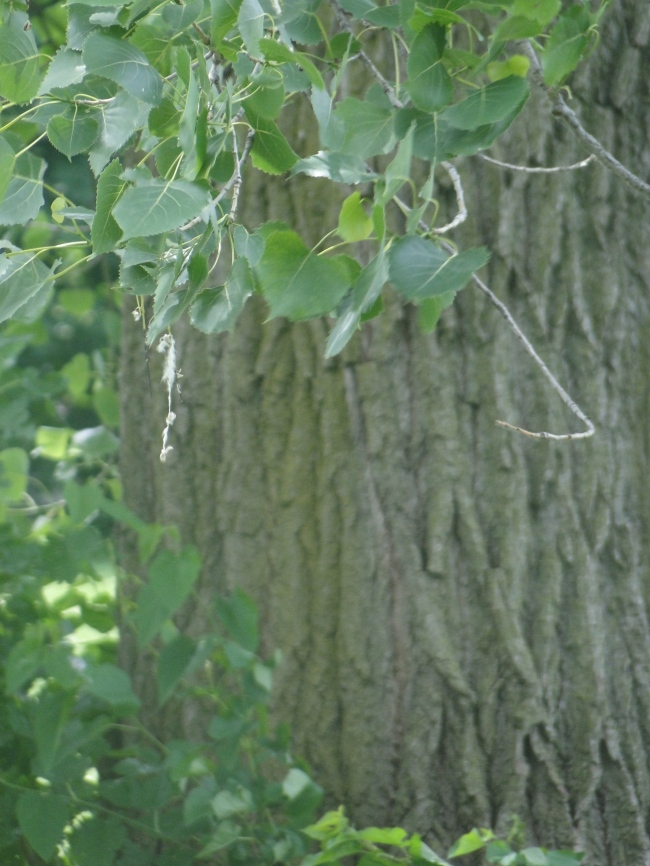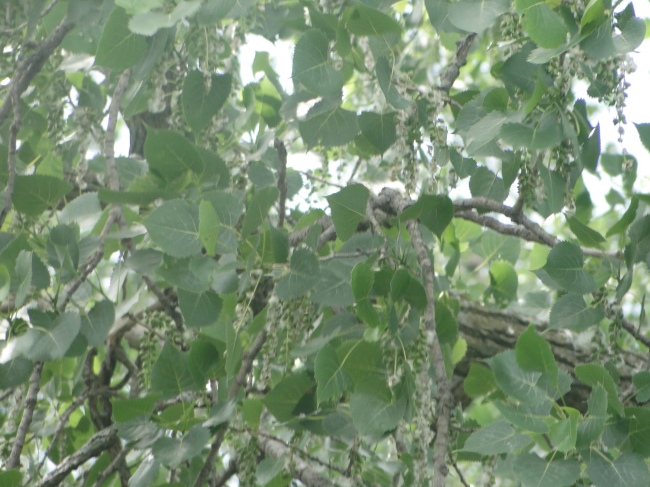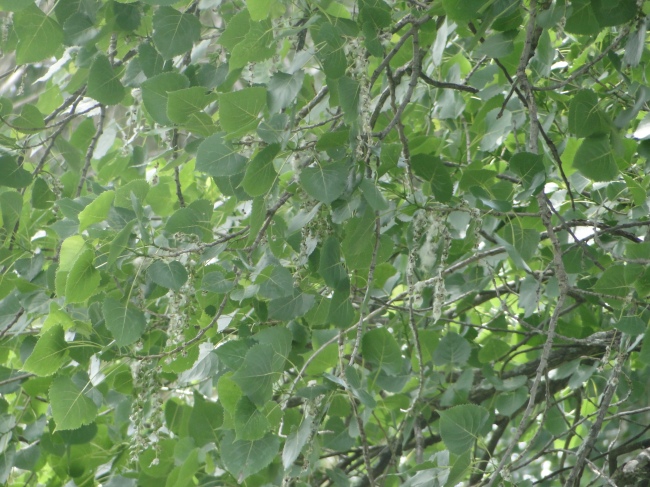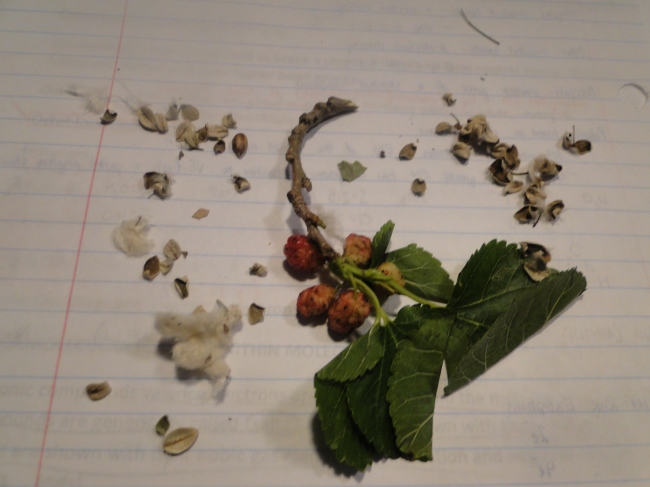Easily identified as the seeds, coated in cotton-like tissues, disperse, Eastern Cottonwoods are fast growing, deciduous, and tolerant of urban pollution. The extensive root system, prolific seed production, and easily warped/cracked bark makes these less than ideal for city planting, although they are drought tolerant. Some cultivars are only male species, eliminating the need to clean up the cotton-like seeds.
Populus deltoides (Eastern Cottonwood)
Deciduous: yes
Hardiness Zones: 2-9
Height: 15-24 meters (50-80 feet) tall, sometimes up to 40 meters (120 feet)
Diameter: 11-18 meters (35-60 feet) across
Growth Rate: fast
Age: typically 70-100 years old
Root System: extensive (does not produce clones, however)
Family: Salicaceae
Subspecies: ssp. monlifera, deltoides, wislizeni
Tolerates: drought (once established), urban pollution/poor air quality
Problems (major): Very prolific seed yields can cause allergies in those affected and frequently become bothersome in large quantities. Dieback, cankers, borers, aphids, caterpillars, and scale are all detrimental.
Problems (minor): leaf spots, rust
Poisonous: no
Soil requirements: performs best in “average”, consistently moist, well-drained soils
Air requirements: tolerates pollution
Watering requirement: moderate to high
Sun requirement: full sun
Needles: none
Cones (male): none
Cones (female): none
Leaves: triangular, toothed, dark green, to 13 centimeters (5 inches) long
Flowers: Catkins occur in March and April before the foliage. The male flowers are in inconspicuous red catkins; the female catkins are green and produce cotton-like seeds in May or July.
Fruits: cotton-like, profusely produced by older trees
Seeds require stratification: yes
Monoecious or Dioecious: dioecious
Notable characteristics:
The seeds are dispersed with cotton-like tissues attached.
Uses:
The wood is useful for crates and pulp. However, it breaks and warps easily, limiting it’s uses.
Sources used:
- http://www.missouribotanicalgarden.org/PlantFinder/PlantFinderDetails.aspx?kempercode=a894
- http://www.hort.uconn.edu/plants/p/popdel/popdel1.html
- http://dendro.cnre.vt.edu/dendrology/syllabus/factsheet.cfm?ID=64
- https://wild.its.utexas.edu/plants/result.php?id_plant=pode3
- http://www.uwgb.edu/biodiversity/herbarium/trees/popdel01.htm
- http://plants.ces.ncsu.edu/plants/all/populus-deltoides/
- https://www.lakeforest.edu/academics/programs/environmental/courses/es203/populus_deltoides.php
- https://www.hort.purdue.edu/newcrop/duke_energy/Populus_deltoides.html
- http://plants.usda.gov/core/profile?symbol=pode3
- http://plants.usda.gov/core/profile?symbol=podem
- https://plants.usda.gov/core/profile?symbol=PODED
- https://plants.usda.gov/core/profile?symbol=PODEW
The foliage alongside the bark
Foliage and the female catkins post pollination
The trunk and canopy
Foliage, male catkins, and some of the cotton-like seeds
All of the images provided were taken by me. They may be used for informational/educational purposes only provided that this article/online journal is cited/referenced first.





